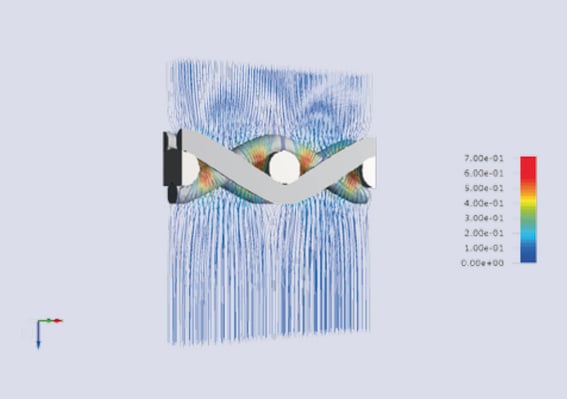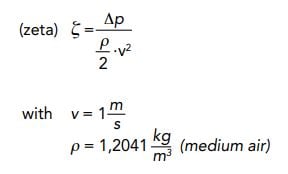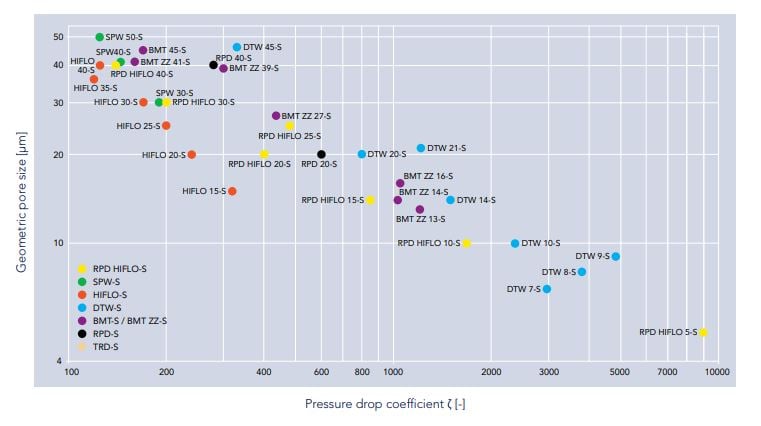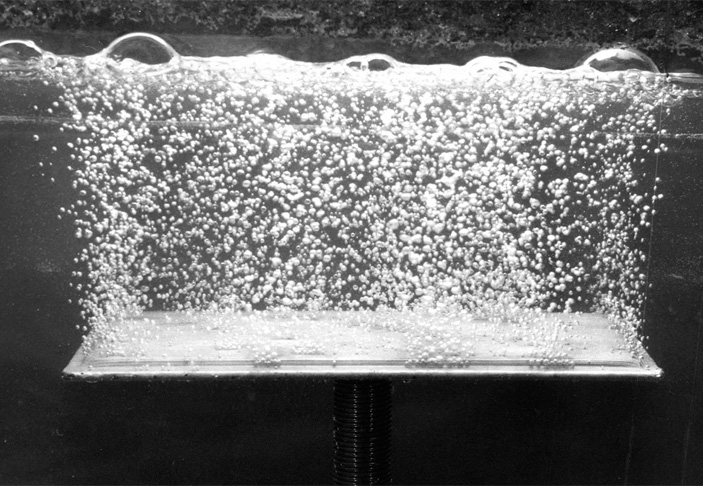How To Calculate the Pressure Drop Coefficient of Wire Mesh Filters
In the world of filtration, there are several aspects of a given filter system that engineers and floor operators should be mindful of. For example, the amount of pressure drop within the system affects energy expenses, the longevity of your filter media, and the amount of stress on your machinery.
When working with woven wire mesh, in particular, the pressure drop can be calculated based on the profile of the weave pattern. With these calculations, you can draw several conclusions about the mesh specifications you are using or interested in.
So, how exactly do you calculate the pressure drop coefficient of woven wire mesh and how does it affect the solution you use?
W.S. Tyler has come to understand that selecting a weave pattern can be a daunting task and is often overlooked. To help you truly gain trust in your mesh, we want to help you select a weave pattern that delivers optimal results and is a glove fit for your specific filter system.
The following article was written to help you make heads or tails on how wire mesh specifications can influence the pressure within a filter system and will cover:
- What pressure drop is
- How pressure drop coefficient is calculated
- The takeaways pressure drop coefficient calculations provide
What Is Pressure Drop?

Most filter systems have two sides of filtering: the input side and the discharge side. The input side is where unfiltered fluid is projected through the filter media, such as woven wire mesh, and the discharge side is where the filtrate is found.
Pressure drop refers to the difference in pressure seen between the input and discharge sides of your filter system.
Did you know that you can generate a visual representation of what the pressure drop may look like in your system? Find out more in the article below:
How Do I Calculate the Pressure Drop Coefficient?

The pressure drop coefficient of a filter medium can be calculated with the equation: 𝜁=𝚫ρ/((ρ/2)ν2). In this equation, 𝜁 represents the pressure drop coefficient, 𝚫ρ represents the pressure difference between the input and discharge side of the filter system, ρ represents the density of the air, and ν represents the flowrate.
Now, having said that, there are several factors that are taken into consideration in regard to the pressure drop coefficient of woven wire mesh surface filters in particular. These factors include:
Fluid properties
- Process temperature
- Density
- Kinematic viscosity
Flow properties
- Volumetric flowrate
- Flow area
- Maximum pressure drop
Particle properties
- Particle size/particle size distribution
- Particle cut size
NOTE: A good rule of thumb to validate your calculations is that the larger the pressure drop coefficient, the larger the pressure drop.
Read the following article to learn more about particle size distribution:
What Does the Pressure Drop Coefficient Tell Me?

A properly calculated pressure drop coefficient provides insight into the permeability and genetic pore diameter of your woven wire mesh. This knowledge helps to ensure you implement a wire mesh filter cloth that is appropriate for your filtration operation.
With respect to the above note, having a lower pressure drop coefficient means there is a high flow rate. On the other hand, if your pressure drop coefficient is high, then there is a low flow rate or an increased resistance from the mesh filter.
Perfect Your Process With the Right Weave Pattern
Calculating the pressure drop coefficient of your wire mesh solutions is a critical step to achieving optimal results. This is because it provides valuable information regarding the performance of your mesh and ultimately your filter system.
Now, one of the biggest takeaways you can obtain from these calculations is how well of a match the weave pattern you are using is. In fact, a pressure drop that is either too high or too low can be resolved by tweaking the weave pattern in most cases.
As W.S. Tyler has been helping customers weave wire mesh into their day-to-day tasks for 150 years, we understand that you may have uncertainties about how reliable your mesh is. We strive to resolve these uncertainties so you can reallocate your time toward improving other areas of your operation.
Read the following article to better understand the weave patterns available to you and begin perfecting your process:
About Ronnie Brown
Ronnie is the Content Writer for W.S. Tyler and has four years of experience as a professional writer. He strives to expand his knowledge on all things particle analysis and woven wire mesh to leverage his exceptional writing and graphic design skills, creating a one-of-a-kind experience for customers.




